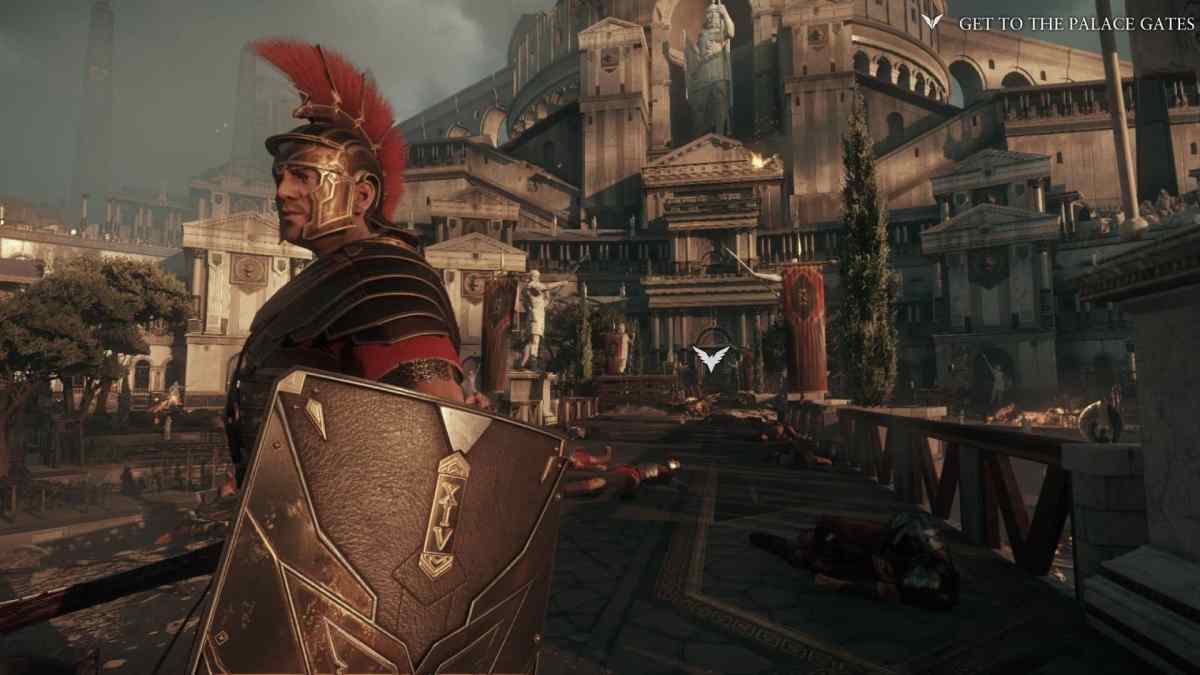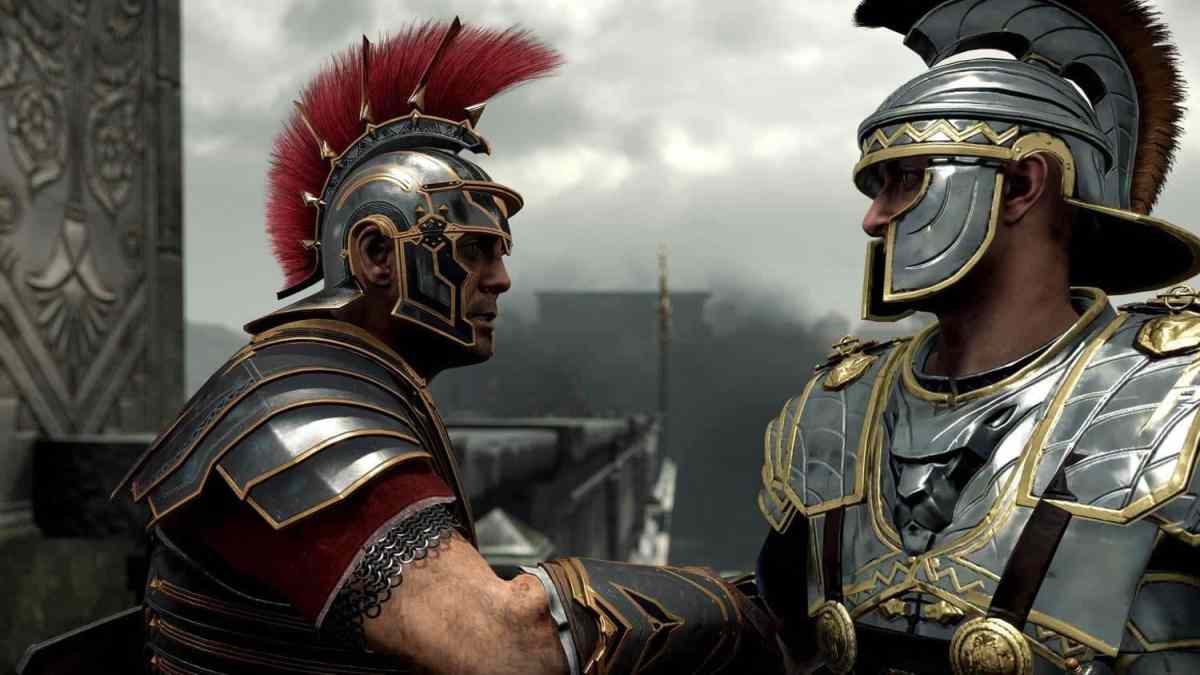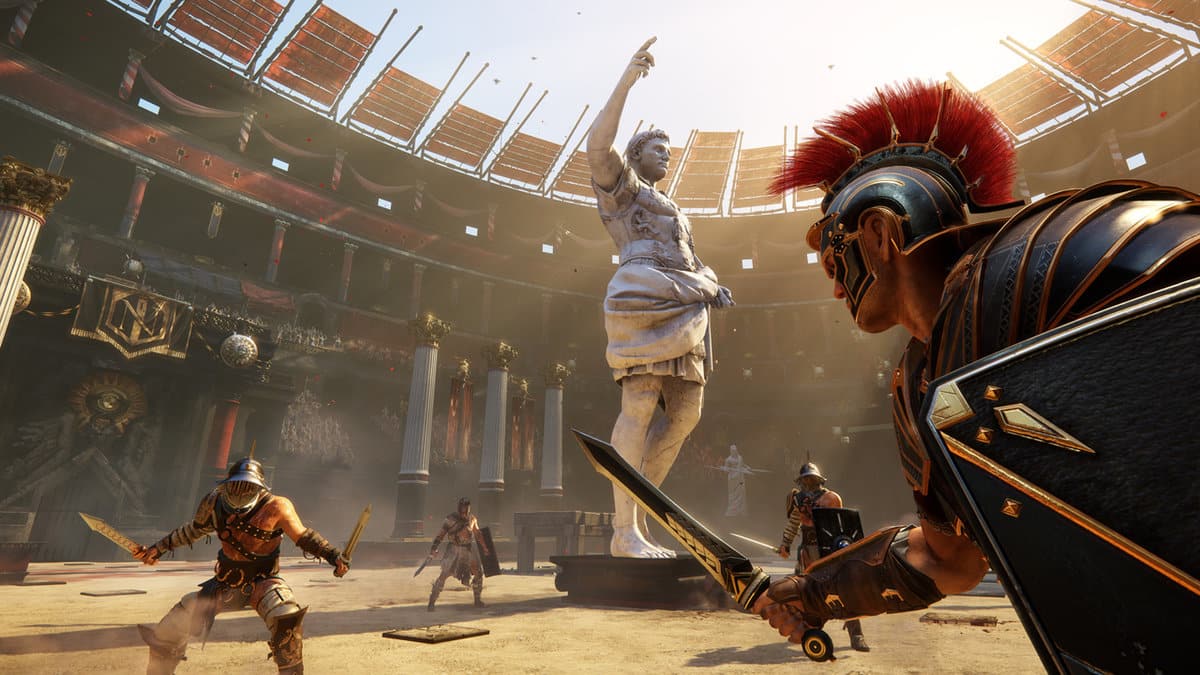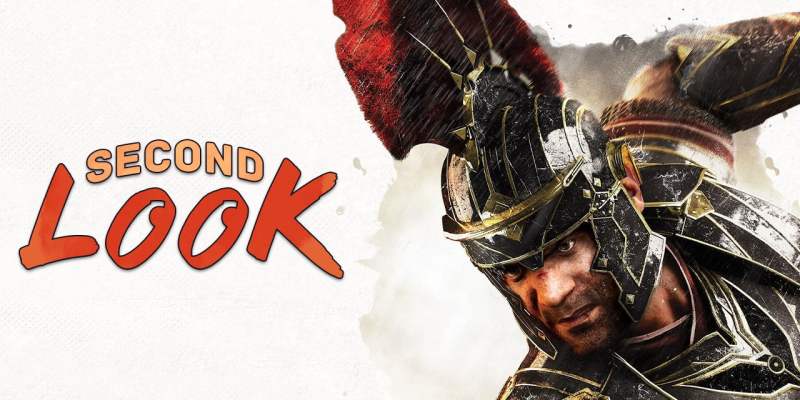Until Hunt: Showdown came along, Ryse: Son of Rome was set to be the last traditional AAA game by Crytek ever, and boy was the developer going out in a blaze of glory. Ryse would be one of the very first Xbox One exclusives, custom-built to optimally harness the system’s various features and design choices to the fullest, for good or ill. In many ways, it accomplishes those goals marvelously, though it’s no slouch in its own right either.
Ryse is inextricably linked to the launch of Xbox One. Even the eventual Steam port has the marks of its original platform strewn about, from its user interface to the way it’s clearly built to pause, then jump back into play without a loading screen. However, despite Xbox One’s issues with Kinect 2.0 and the always-online controversy, Ryse symbolizes Xbox One’s foresight in trying to deliver greater accessibility and convenience to players.
Ryse, for all its still remarkably impressive graphics, can stop on a dime for anything. Need to upgrade a skill? Go right ahead — it’s damn near instantaneous. Friend wants to play co-op? You can hop out of campaign in no time, then jump right back into the vengeful journey of centurion Marius. Transitions between cutscenes and levels are so seamless that at times it’s only a change in camera perspective that gives it away. And like Sunset Overdrive, Ryse is one of the early Xbox One games that was built with this functionality in mind, letting you casually put your Xbox to sleep mode or watch a movie, then pick right back up like nothing happened.
This might sound unremarkable now, but at the time such seamlessness was a jaw-dropping technical feat. While it may be an incredibly linear game, Ryse: Son of Rome has a breadth of detail that would normally strain most systems yet can run smoothly on PC hardware comparable to last-gen. I can say that with certainty, as my first taste of the game was on a much older machine. This is all the more impressive given it’s running on CryEngine, which is not an engine known for playing nice when it comes to optimization.
In many ways, this sort of functionality is what we’re being sold with the SSD-based architecture of the Xbox Series X and PlayStation 5: instantly accessible content, ready to play in a breath, and Ryse was already achieving this a generation ahead of most games. While some have followed in its footsteps, most games still struggle with the practice, especially if you shut your console off.
Ironically though, despite its technical stride forward, Ryse looks backwards for its approach to design. The presentation is straight out of Call of Duty, interweaving set piece moments, grand battles, and dramatic fades to black when you’re injured for dramatic effect. Each chapter is built like its own mini-campaign with specific themes, wrinkles, and mechanics. The core gameplay is relatively simple — you can attack, stun, dodge, and counter enemies with a single button press — but the rhythmic flow of everything feels like a more in-depth Arkham Asylum.

It digs further back when it comes to finding variety, opting for minigames like leading legionnaires through battle or manning the fastest-firing ballista I’ve ever seen. While there is a progression system, it centers almost entirely on building up bigger stats for your health and focus meters. It’s also so easy to grind your way to the top that eventually you’ll be investing all your experience points into new execution moves, granting new takedown opportunities with refreshingly elegant quick-time events (QTEs).
That effortless integration of QTEs is one of Ryse: Son of Rome’s weirdest strengths. Where many have been content to just copy God of War’s approach, Ryse builds around the idea of precision timing for a lot of its gameplay. Time your responses precisely, and you’ll receive a massive payout with Ryse’s boost system. You can choose to have your combo go towards regenerating your health or focus, increase your experience gain, or up your damage. With the power to swap between these on the fly, the initial simplicity gives way to a sharp, lithe combat system. Achieve several perfect deflections and attacks in a row and you’ll activate Eagle Mode, which will enhance your performance further.
No elaborate combo strings or masochistic enemies harass you, yet it’s still a fun challenge. Boss fights require you pay close attention to these systems — you can cut some encounters in half if you’re really paying attention. Barging into encounters gives way to tactfully disassembling opponents, separating tanks from their weaker allies with a good few shield bashes. Then you realize that spears, normally used to counter archers at range, can also be thrown mid-brawl, and that slowing time with Focus Mode opens up new execution moves, and it all starts falling into place.

I’m not going to pretend that Ryse’s story is anything great. However, regardless of the script being more anachronistic than an episode of DC’s Legends of Tomorrow, it’s carried along breezily by tight game design and excellent presentation. Ryse doesn’t look or carry itself like a launch title, holding up well alongside recent releases, especially in terms of mocap; this might just be some of the best combat animations I’ve ever seen. Compounded with thundering sound design, you feel every slide, smash, and dodge, with Ryse’s dynamic camera ducking and weaving around smoothly, always keeping the vital action at the fore.
Ryse’s ambition and confidence are as strong as those of Too Human — except Ryse actually delivers in an intentionally brilliant way. So many elements here could’ve fallen flat, but instead they elevate Ryse into a remarkable thrill ride from start to finish. Each level is incredibly replayable — some even give you the choice of tactical options to decide how key battles play out in tangibly varied ways. There’s no branching story narratively, but where you position your forces in the heat of battle can produce meaningful mechanical differences.
Marius is a genuinely likable protagonist too. He shows compassion, humility, and a sense of duty that’s much healthier than what the usual sort of ultra-masculine hero exudes. Your allies and enemies are portrayed with gravitas too, regardless of laughable historical liberties like Boudica riding war elephants. Never the height of video game storytelling, Ryse: Son of Rome still conveys itself with a confident stride that helps you overlook its blemishes.

As if that all weren’t enough, the game boasts an entire suite of co-op and solo arenas players can fight in as a customizable gladiator. While each environment is clearly built out of moving parts in the Colosseum, the aesthetic of fighting through ever-shifting, barbarous battlegrounds stands on its own opposite the main campaign’s more grounded locales. You’re thrown against ever fiercer challenges in these stages, testing your mettle to the breaking point far better than any sort of tacked on competitive play might’ve tried. By doubling down on everything that makes the campaign such a delight, it makes the value proposition all the better, especially if you can grab a friend for the ride.
The odds were stacked against Ryse: Son of Rome ever becoming a noteworthy game. It was almost a cartoony Kinect exclusive for the 360, only to then become the Xbox One’s foremost tech demo. Yet, Ryse: Son of Rome overcame that tech demo label to become one of the most memorable Xbox One exclusives. It’s as forward-thinking as it is classically inspired, appealing to both fans of sixth-gen gaming and those eager for what the coming consoles promise later this year. For those who dare to try it, there is a warrior’s nobility to Ryse, and it’s a tragedy we’ll likely never see a sequel.
